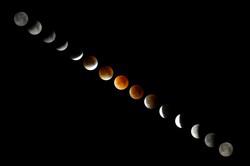Glossary term: ग्रहण
Description: जेव्हा एखादी खगोलशास्त्रीय वस्तू दुसर्या वस्तूच्या सावलीत जाऊन तात्पुरती अवरोधित होते किंवा दुसरी वस्तू दर्शक आणि त्या वस्तूच्या दरम्यान येते तेव्हा ग्रहण होते. ग्रहणांची उदाहरणे म्हणजे चंद्रग्रहण - जेव्हा पृथ्वी सूर्य आणि चंद्राच्या मध्ये उभी असते आणि चंद्र पृथ्वीच्या सावलीत फिरतो, किंवा सूर्यग्रहणात - जेव्हा चंद्र पृथ्वी आणि सूर्य यांच्यामध्ये फिरतो आणि सूर्य प्रकाशाचा काही भाग किंवा सर्व भाग अवरोधित करतो. जर एक वस्तू केवळ इतर वस्तूचा एक छोटासा भाग अवरोधित करते, तर या घटनेला संक्रमण म्हणतात. जर एक वस्तू इतर वस्तूला पूर्णपणे अवरोधित करते, तर या घटनेला ऑकल्टेशन(दृष्टिआड होणे) म्हणतात.
Related Terms:
See this term in other languages
Term and definition status: The original definition of this term in English have been approved by a research astronomer and a teacher The translation of this term and its definition is still awaiting approval
The OAE Multilingual Glossary is a project of the IAU Office of Astronomy for Education (OAE) in collaboration with the IAU Office of Astronomy Outreach (OAO). The terms and definitions were chosen, written and reviewed by a collective effort from the OAE, the OAE Centers and Nodes, the OAE National Astronomy Education Coordinators (NAECs) and other volunteers. You can find a full list of credits here. All glossary terms and their definitions are released under a Creative Commons CC BY-4.0 license and should be credited to "IAU OAE".
Related Media
The Eclipse Between Us, by Muhammad Rayhan, Indonesia
Credit: Muhammad Rayhan/IAU OAE
License: CC-BY-4.0 Creative Commons Attribution 4.0 International (CC BY 4.0) icons
Red Moon, by Daniel Henrion, France
Credit: Daniel Henrion/IAU OAE
License: CC-BY-4.0 Creative Commons Attribution 4.0 International (CC BY 4.0) icons










